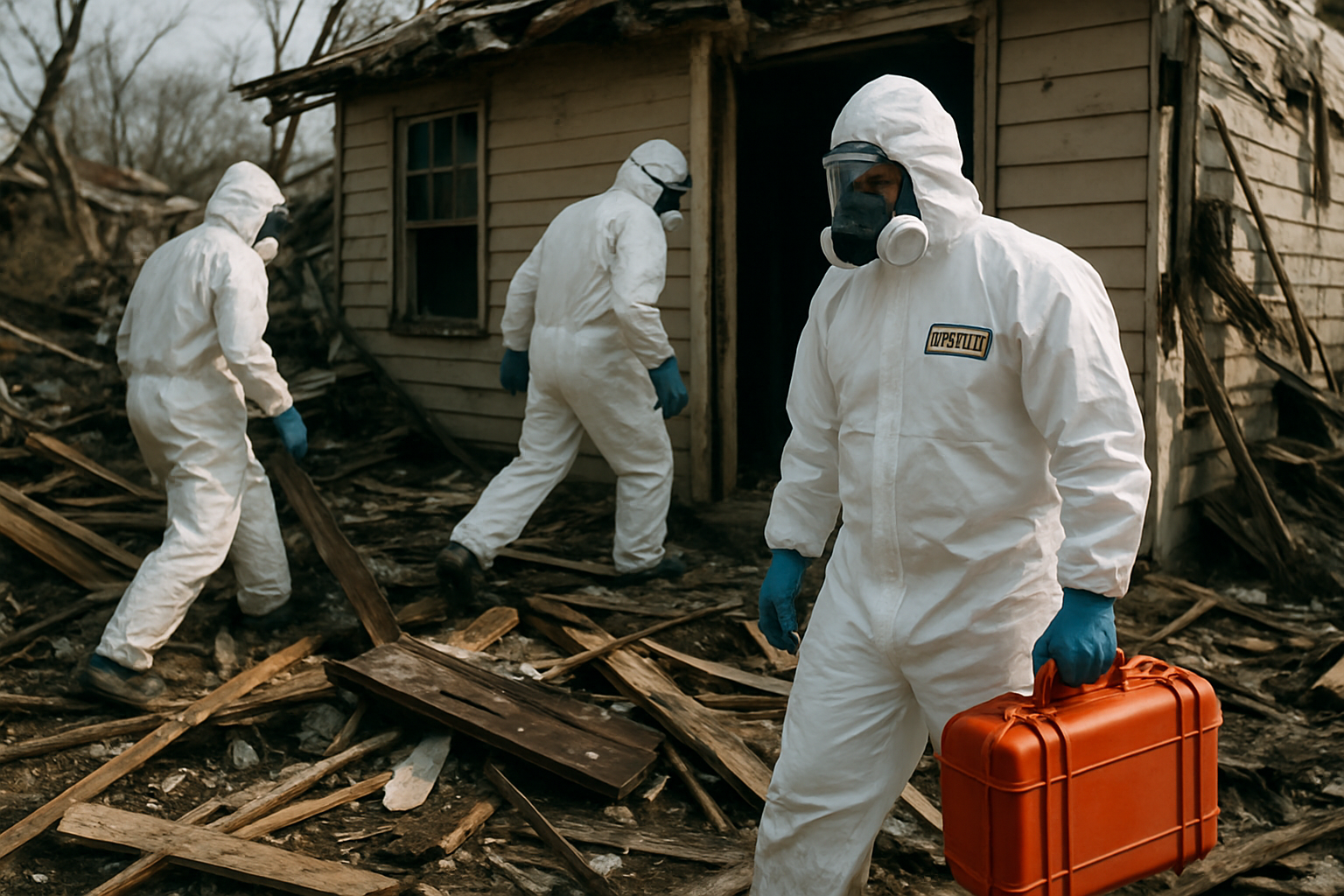Biohazard Cleanup Explained: When You Need More Than a Standard Restoration Service

Biohazard Cleanup Explained: When You Need More Than a Standard Restoration Service
Meta Title:Biohazard Cleanup Explained: When You Need More Than a Standard Restoration Service
Meta Description:Biohazard cleanup explained — learn when you need more than standard restoration and how professionals handle dangerous contamination safely.
URL Slug:biohazard-cleanup-explained-when-you-need-more-than-a-standard-restoration-service
Introduction
Not all damage to a property is the same. While floods, fires, and storms can leave homes and businesses in disarray, some situations go beyond standard restoration needs.Biohazard cleanup explainedmeans understanding what happens when contamination from blood, sewage, chemicals, or infectious materials requires a different level of care.
Unlike traditional restoration, biohazard cleanup involves specialized safety protocols, advanced equipment, and trained professionals who can handle dangerous environments. Knowing when you need more than a standard service can protect not only your property but also your health and community.
TLDR – Quick Guide
- Biohazard cleanup deals with dangerous contaminants like blood, sewage, or chemicals.
- Standard restoration services aren’t equipped for health risks from biohazards.
- Certified technicians use protective gear, containment, and disinfection methods.
- Situations include crime scenes, unattended deaths, sewage backups, and hoarding.
- Professional biohazard teams ensure compliance with strict safety regulations.
What Is Biohazard Cleanup?
Biohazard cleanup refers to the safe removal, cleaning, and disposal of hazardous biological or chemical contaminants. Unlike basic cleaning or restoration, these services require technicians to follow OSHA, EPA, and state guidelines to prevent health risks. The process includes assessment, containment, cleaning, sanitization, and final clearance to ensure the property is safe for occupancy again.
Common Situations Requiring Biohazard Cleanup
H3: Crime and Trauma Scenes
Bloodborne pathogens can survive for days, and improperly cleaned surfaces may spread infections. Professional cleanup ensures all traces are safely removed.
H3: Unattended Deaths
When a death goes undiscovered, decomposition creates dangerous biological hazards. Specialized teams handle the cleanup with respect and discretion.
H3: Sewage Backups
Sewage water carries harmful bacteria, parasites, and viruses. Cleanup requires disinfection beyond what standard water restoration provides.
H3: Hoarding Environments
Extreme hoarding can harbor mold, pests, and biohazards from animal or human waste. Trained crews restore safety while preserving salvageable items.
H3: Chemical Contamination
Improper handling of hazardous chemicals, spills, or drug labs poses severe risks. Only certified technicians can remediate these conditions safely.
The Biohazard Cleanup Process
- Assessment & Containment– The affected area is inspected, then sealed to prevent cross-contamination.
- Personal Protective Equipment (PPE)– Crews use specialized gear such as respirators, suits, and gloves.
- Removal & Disposal– Contaminated items are removed and disposed of according to federal and state laws.
- Cleaning & Sanitization– Industrial-strength disinfectants and equipment eliminate pathogens.
- Final Verification– The site is tested to confirm safety before reoccupation.
Why Professional Help Is Critical
Biohazard cleanup isn’t just about restoring appearances; it’s about safeguarding lives. Exposure to pathogens or chemicals can cause long-term health consequences. Certified professionals not only protect occupants but also ensure legal compliance for property owners and businesses.
Key Takeaways
- Biohazard cleanup explained: It goes beyond restoration, focusing on health and safety.
- Common cases include crime scenes, unattended deaths, sewage, hoarding, and chemical exposure.
- Certified crews use specialized equipment, safety protocols, and legal disposal methods.
- DIY approaches are dangerous and may violate regulations.
- Professional biohazard services restore safety, dignity, and peace of mind.
FAQs
- What exactly qualifies as a biohazard situation?
A biohazard situation involves exposure to biological or chemical contaminants that can harm human health. This includes bloodborne pathogens, sewage, mold, or hazardous chemicals. Any event with potential disease or toxin exposure requires professional cleanup. - Can standard cleaning services handle biohazard cleanup?
No, biohazard cleanup requires specialized training, equipment, and certifications. Standard cleaning crews are not prepared to safely handle infectious or chemical contaminants. Attempting DIY cleanup can put lives at risk and violate safety laws. - How long does biohazard cleanup usually take?
The timeline depends on the size of the contamination and type of hazard. A small spill might be resolved in hours, while an unattended death may take several days. Crews always prioritize thoroughness and safety over speed. - Is biohazard cleanup covered by insurance?
In many cases, homeowner’s or business insurance may cover biohazard cleanup. Coverage depends on the cause of the damage and the policy terms. It’s important to consult both your insurer and the cleanup provider before beginning work. - Why should I hire a certified biohazard cleanup company?
Certified companies follow strict health, safety, and environmental regulations. They protect property owners from liability while ensuring complete removal of dangerous contaminants. This professional approach provides peace of mind and prevents future risks.
